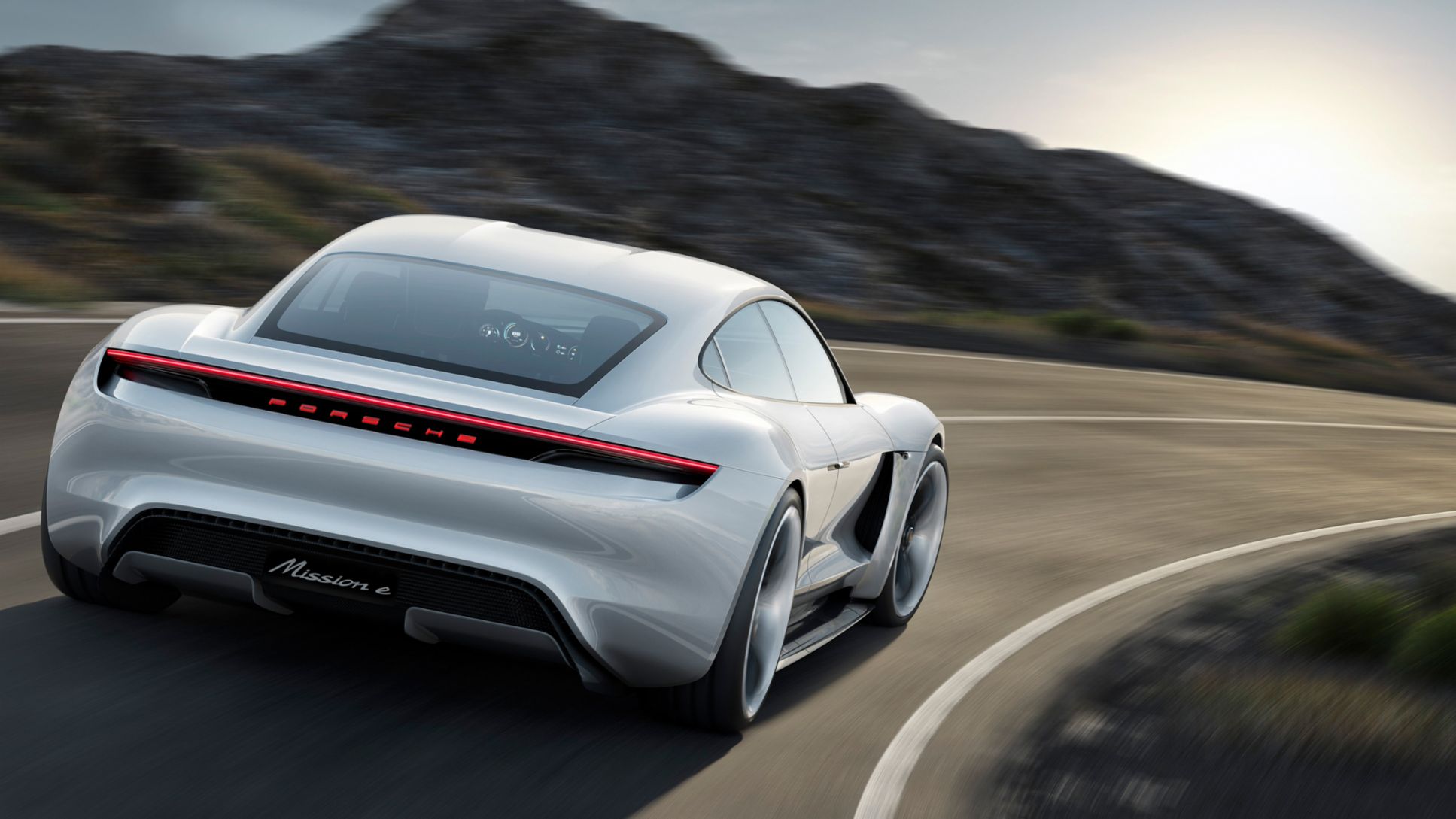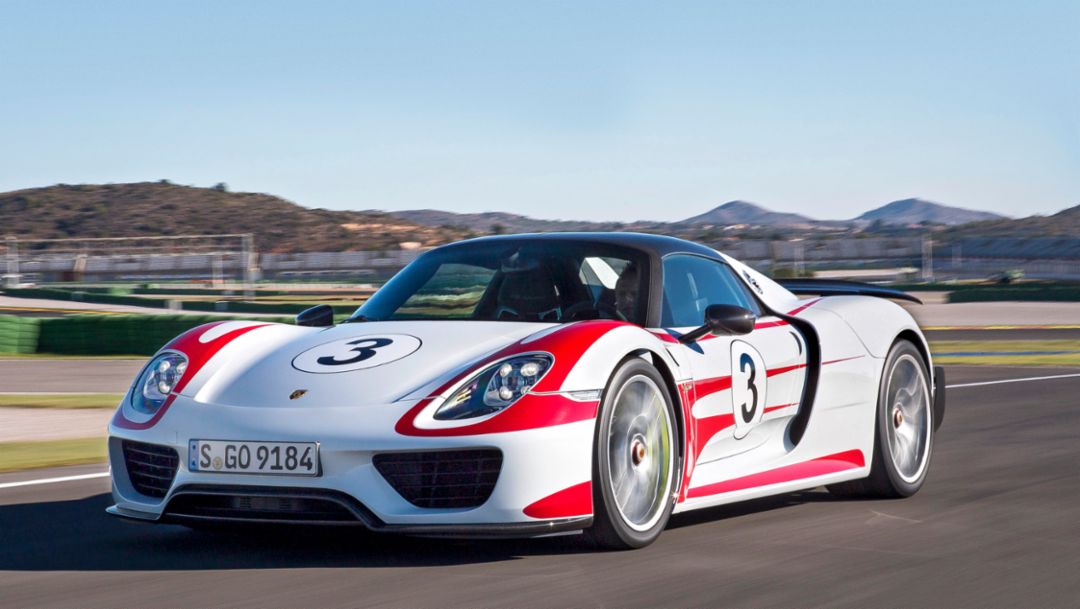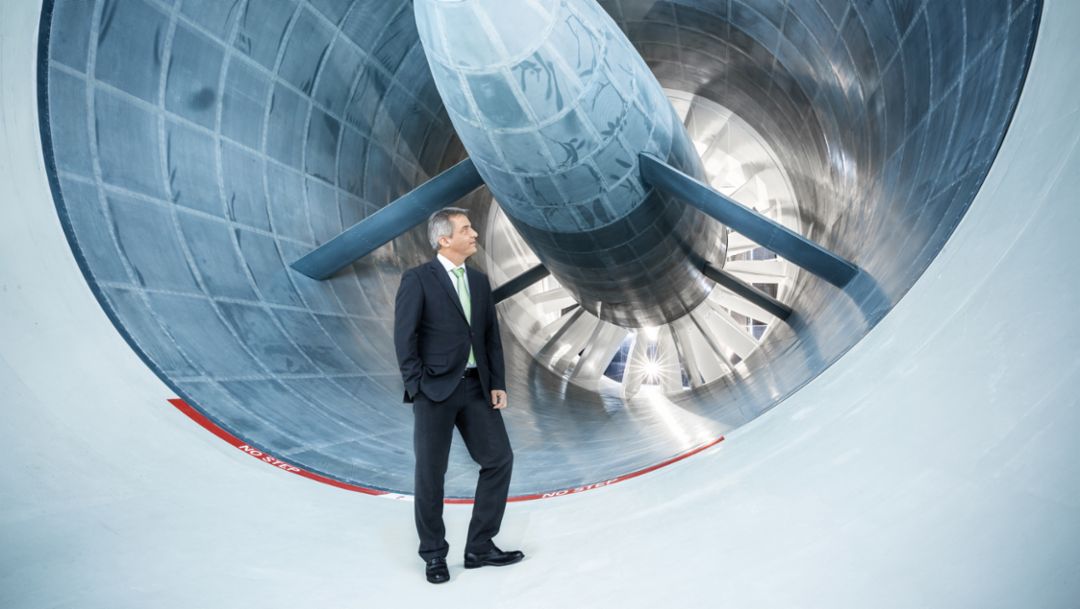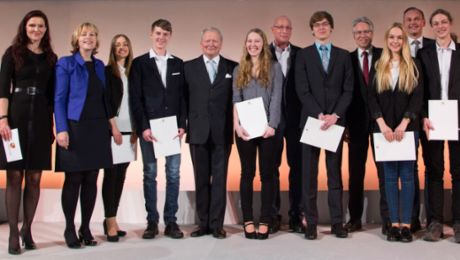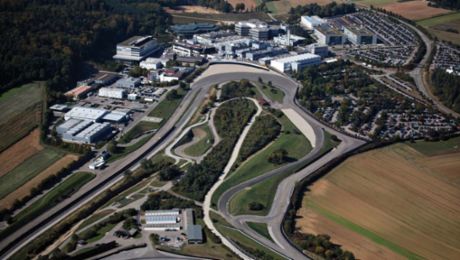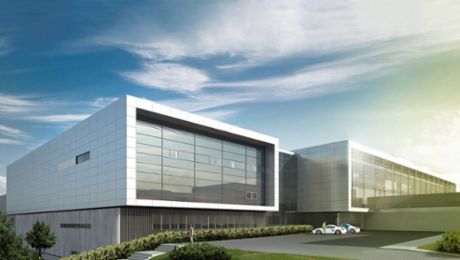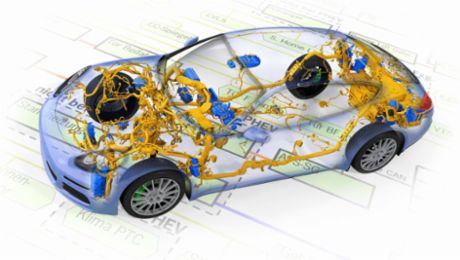Weissach. Among car guys, the mere mention of the town’s name perks up the ears – a bit like mentioning the Piemont to truffle fans. The Development Centre is a unique technology cosmos. Some 6,500 employees, 5,000 belonging to Porsche and 1,500 belonging to partner companies, work on a daily basis there in the areas of R&D, motorsports, purchasing and support fields.
The buildings are placed close to one another, with narrow connecting streets snaking between them. The test track has a variety of dynamic and torture tracks, as well as a small but fine 2.8-km circular track. If you could distill the essence of Porsche and lay it down as pavement, this would be it: companies that build sports cars need to test on sport tracks. And because motorsports inherently involve a need for speed, those tracks are ideally placed near the R&D facilities.
All vehicles of the brand, whether intended for daily street use or racing competition, run through the different departments at the Weissach Development Centre (known as the EZW in German). Here is where work on the automobile of tomorrow never ends. As soon as one generation is finished, the next is already being set into motion. Parallel lines now allow for completely new models to be added to the portfolio, each of course with its own innovative technology. A programme oriented toward perpetual improvement as demanded by the philosophy of “Porsche Intelligent Performance.”
Unique tradition
Porsche created the test track in Weissach in the early 1960s. Construction began in 1961. The Skid Pad opened in 1962, and the off-road course followed in 1967. The CanAm course was built in 1971 around the Skid Pad, as was the mountain course with narrow curves. The R&D buildings to power this progress were also being erected piece by piece at the same time. They have taken on a certain air of mystery, seemingly a distant place from which wondrous technology did and does emerge. The Weissach name stands for success on the racing track, and for the subsequent transfer of that technology from competition vehicles to seriesproduced models.
Example 1: In 1970, it was the powerhouse 917, at the time developed with verve and style by a young engineer named Ferdinand Piëch, that claimed Porsche’s first overall victory at the “24 hours of Le Mans.” In 1972, in an effort to eke out even greater engine performance from its twelve-cylinder motor, the 917 was outfitted with two turbochargers (“twin turbo”). Valves were used to regulate the injected pressure and prevent an over-charge. One year later this technology was moved to series production, culminating in the famous 911 Turbo (930 series) first presented in 1973, which received further racing technology in form of an additional intercooler in 1977. The 959 was introduced to the public in 1985. This extraordinary technological package brought some cultivated manners to the turbocharger design: it used two complementary units instead of one, each covering a different turbocharge range. The feared “turbo gap” was finally a thing of the past. In 2006, the 911 Turbo premiered its Variable Turbine Geometry (VTG) to ensure optimal flow conditions in all operating states. Then and now Porsche is the sole car maker to use the VTG charger in gasoline engines. Yet the turbocharging technology is more topical than ever, and is considered capstone technology for bringing combustion engines into compliance with the needs of fuel economy and emissions, especially going forward.
Example 2: The Porsche Double Clutch Transmission (PDK). The sports car maker was working on this kind of a power converter as far back as at the end of the 1960s. In the early 1980s, the developers were working on improving the 956/962 sports car when they returned to the idea of a gear shifter that did not interrupt the application of power. The technology is especially well suited for turbocharged engines, since you can continue to supply gas even when shifting, thus maintaining a constant turbocharge – not to mention short shifting times. The PDK proved a valuable commodity in the motorsports arena, but couldn’t yet provide the level of comfort needed in production vehicles. The electronics first needed to be redesigned: In 2008, the 911 Carrera (997) became the first production sports car to feature the double clutch transmission. Over 90 percent of the 911s that Porsche sells today are outfitted with the PDK, and in other models it’s a standard feature – for sporting handling, but also for (and because of) the low fuel consumption.
Example 3: The sporty all-wheel drive also originated in the Weissach Development Centre. Here the 959 once again comes into play. It was the first all-wheel vehicle with sensors monitoring the driving conditions to distribute the engine’s power variably between the front and rear axle using a stageless electronic differential lock. This technology proved a big success: in 1986, the 959 claimed first place in the Paris-Dakar rally. Two years later, the first production car using the allwheel drive came on the market, the 911 Carrera 4 (964). Porsche has continued to refine the concept ever since. The next stage of innovation involves all-wheel drive with electric motor support, as embodied by the 911 GT3 R Hybrid, 918 Spyder and 919 Hybrid.
Rolling laboratories drive technology forward, pushing it to its limits and refining it. The Weissach Development Centre works like a supercomputer. Complicated issues are fed into it – comprehensive answers are returned. The result is always: the best sports cars in the world, for motorsports and for the “Engineered in Weissach” lines.
The Development Centre is always reinventing itself as well, staying abreast of the latest technology and scientific insights. Weissach features cutting-edge technology. The 2014 operating year saw Porsche open a new design studio in a high-concept architectural design and an aeroacoustic wind tunnel. Factoring in the Electronics Integration Centre (EIZ) that opened in 2013, the company has invested more than 150 million euro in expanding and refurbishing the Development Centre. After all, if you want to build cars and push envelopes, then you have to be capable of the kind of research that pushes limits.
Consumption data
918 Spyder: Combined fuel consumption: 3,1 – 3,0 l/100 km; CO₂ emissions: 72-70 g/km; Electricity consumption 12.7 kWh/100 km
918 Spyder (Weissach package): Combined fuel consumption: 3,0 l/100 km; CO₂ emissions: 70 g/km; Electricity consumption: 12.7 kWh/100 km
